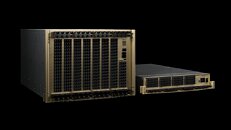
AMD & HUMAIN Reveal Formation of $10 Billion Strategic Collab, Aimed at Advancing Global AI
AMD and HUMAIN, Saudi Arabia's new AI enterprise, today announced a landmark agreement to build the world's most open, scalable, resilient, and cost-efficient AI infrastructure, that will power the future of global intelligence through a network of AMD-based AI computing centers stretching from the Kingdom of Saudi Arabia to the United States. As part of the agreement, the parties will invest up to $10B to deploy 500 megawatts of AI compute capacity over the next five years. The AI superstructure built by AMD and HUMAIN will be open by design, accessible at scale, and optimized to power AI workloads across enterprise, start-up and sovereign markets. HUMAIN will oversee end-to-end delivery, including hyperscale data center, sustainable power systems, and global fiber interconnects, and AMD will provide the full spectrum of the AMD AI compute portfolio and the AMD ROCm open software ecosystem.
"At AMD, we have a bold vision to enable the future of AI everywhere—bringing open, high-performance computing to every developer, AI start-up and enterprise around the world," said Dr. Lisa Su, Chair and CEO, AMD. "Our investment with HUMAIN is a significant milestone in advancing global AI infrastructure. Together, we are building a globally significant AI platform that delivers performance, openness and reach at unprecedented levels." With initial deployments already underway across key global regions, the collaboration is on track to activate multi-exaflop capacity by early 2026, supported by next-gen AI silicon, modular data center zones, and a developer-enablement focused software platform stack built around open standards and interoperability.
"At AMD, we have a bold vision to enable the future of AI everywhere—bringing open, high-performance computing to every developer, AI start-up and enterprise around the world," said Dr. Lisa Su, Chair and CEO, AMD. "Our investment with HUMAIN is a significant milestone in advancing global AI infrastructure. Together, we are building a globally significant AI platform that delivers performance, openness and reach at unprecedented levels." With initial deployments already underway across key global regions, the collaboration is on track to activate multi-exaflop capacity by early 2026, supported by next-gen AI silicon, modular data center zones, and a developer-enablement focused software platform stack built around open standards and interoperability.


































